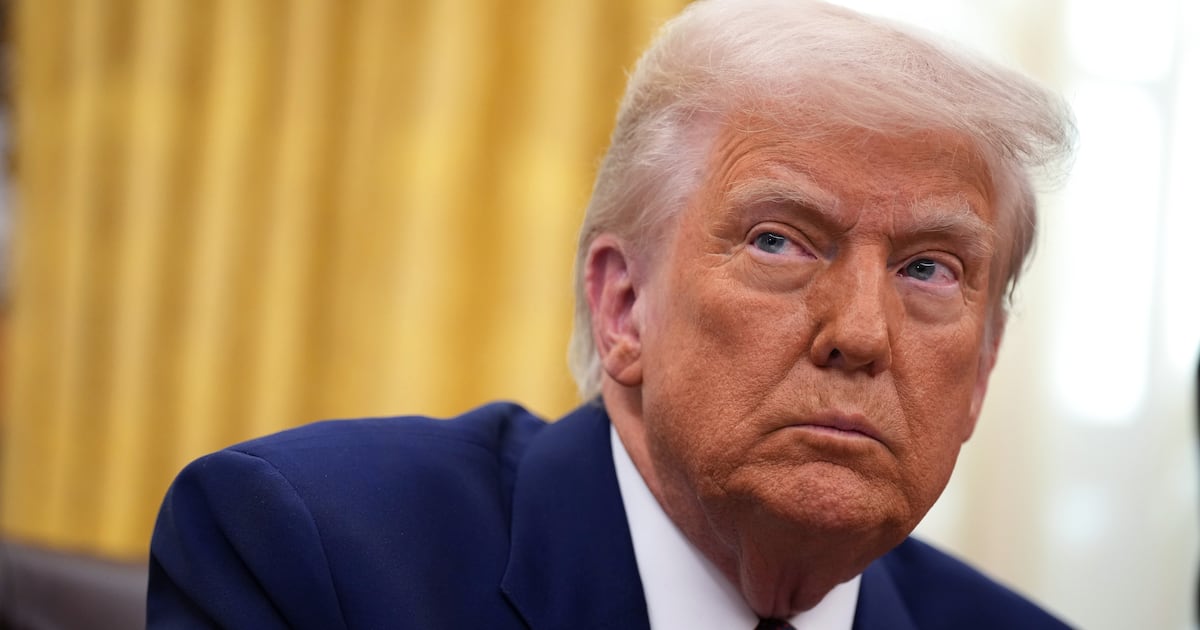
Any other night, Clifford “Skipp” Townsend said, he would have turned around to face his death. But on this particular evening, as the L.A. riots raged around him, he and the seven or eight other members of the Rollin’ 20s Bloods with whom he was breaking into a safe in an abandoned garage got off easy.
Townsend had spun around to see a man wearing a blue bandana and brandishing a shotgun: a Crip, his gang’s implacable rival. It would have taken only a twitch of the Crip’s trigger finger to kill him. But amid the confusion of the riots, L.A.’s most notorious gangs called a truce.
“No, no, we’re together today,” the anonymous Crip said, letting him and his fellow Bloods go about their business. Everyone wanted his share, and no one wanted to die. When would a chance like this come along again?
It wasn’t an unusual anecdote for Townsend and fellow former gang member Alfred Lomas, who shared their memories of participating in the riots with The Daily Beast. The riots were a sudden opportunity to vent frustrations with the police, with a judicial system that favored everyone but them, with limited employment. By taking to the streets and looting, they were only getting what was theirs. The two said that violence on the same scale could spring from those Los Angeles neighborhoods again, and that while fewer residents believe that a riot in the next five years is likely, many of the same problems remain.
And although Rodney King’s beating mattered to the rioters, it wasn’t their sole or even always their primary motivation for rioting. Townsend was less upset by Rodney King than he was by the shooting of Latasha Harlins, a 15-year-old black girl who was killed with a single bullet by a Korean convenience-store owner who suspected her of shoplifting. That was in March 1991, one day after the four policemen charged with assault in King’s beating pleaded not guilty. Townsend says he couldn’t understand why Harlins’s shooter was let off with a sentence of only five years’ probation. “The liquor-store owner said she had stolen a bottle of orange juice,” Townsend said. “That penetrated my heart.”
***
On April 29, when the not-guilty verdicts were handed down in the case of the four LAPD officers who had beaten Rodney King, faith-based groups tried to keep demonstrations peaceful. Townsend, in fact, was on his way to church with his cousin as the first bottles flew. On their way, he said, he saw a Korean liquor store being looted, one of many Korean businesses targeted out of anger over the Harlins shooting. “I went to the church, and while we were in the church everybody’s pager and phone was going off saying it was a riot,” Townsend remembers.
As the riots spread beyond Florence and Normandie, Townsend said, it seemed the natural order had gone unhinged. “There was no such thing as a red light,” Townsend said, and the Los Angeles Police Department was nowhere to be seen. When he did see police, “they weren’t making arrests”—not even the cops in two squad cars that pulled up when Townsend’s buddies were robbing a pawn shop. He says the cops shooed them away, got back in their cars, and drove off.
The gangs were on their own, and they seized the opportunity. “Pretty much we started thinking in terms of what is of value,” Townsend recalled. “Where are the jewelry stores, the television store, the furniture store.” When they saw an automotive store, they “went in and started stealing tires. None of us needed tires, but let’s fill the backyard up with tires. Now we have tires.”
The most hallucinatory moments were the bacchanalian reprieves in the projects after a hard day of looting, where rival gang members celebrated together. “After the rioting everyone was going to some projects and partying, smoking, drinking, playing music, dancing all night,” Townsend said.
A tenuous truce, struck three days before the riots by gang members fed up with the killing, somehow held. Nevertheless, he was armed. “Looking at someone who tried to kill me months prior or even years prior—it’s hard to get over that.”
****
Former Florencia 13 heavy hitter Alfred Lomas says that gang members were far from the only participants in the riots.
“It wasn’t entirely a gang issue as much as people assume,” Lomas told The Daily Beast. “The L.A. riots represented a population that involved all different kinds of ethnic groups, that involved more a population unrest than a gang unrest.”
Lomas had gotten his start in gang life early, crewing up as a 12-year-old drug addict with the city’s largest Latino gang in 1976, a process that involved him being beaten by the other members of his new fraternity for 13 seconds. A few years later, at the age of 18, Lomas volunteered to serve his country because he “wanted to learn how to shoot and kill people.”
“My specialty was using that skill set”—skills he acquired at the expense of the American taxpayer—“to further the gang and support my drug habit, and it took me into some pretty high-profile stuff,” Lomas said. “I was part of the introduction of crack cocaine in the area I was from in South Central,” said Lomas, who grew up in the Florence-Firestone neighborhood and helped coordinate his gang’s drug trade. “I’ve been involved in every major gang war in South Central until about 10 years ago.”
To this day, despite having left gang life, Lomas says that he remembers the simmering tensions that bubbled and bubbled before boiling over in 1992.
“Being a young kid growing up in one of these areas, there’s always a sense of harassment from the police,” Lomas said. “We’re talking about a high-crime, a high-unemployment area, and you grow up and you know you’re disadvantaged.”
“At the time I was watching the actual riots, the Reginald Denny thing, I was located one block east of South Central in Huntington Park,” Lomas said. He was with other Florencia 13 members; Lomas says the very fact that he was a career lawbreaker seemed to separate him from most rioters. For one thing, his gang was more organized than the neighborhood toughs of the 8 Tray Crips who flogged Denny. Lomas’s gang disapproved of that kind of display, he said.
“The criminal element, we’re looking at this like, ‘We don’t agree with this beating, that’s obviously wrong, they’re assholes, but where is the LAPD? Where are the illustrious blue lights?’” Lomas said. “It was actually days, one or two days, before we saw any sort of action from law enforcement.”
After the first day, Lomas said he and his friends had to expand their scope to find fresh shops to loot, driving into Koreatown as well as neighborhoods on the city’s west side, including Hollywood. “Our areas got burnt up pretty quick,” Lomas said. “We’re an equal-opportunity gang, so we drove around looking for other places. I remember seeing some, now we would call them hipsters, with a shopping cart taking TVs, taking clothes, taking furniture.” It’s this last observation that has most stuck with Lomas through the years—what one may call the egalitarian nature of the pillaging and pilfering.
“Given what occurred then, in the state of mind I was in, it was like, F the police, F the government, F everyone,” Lomas said. “And I think the L.A. riots—I don’t care what anyone says—the L.A. riots represented that kind of catharsis on a mass level.”
****
These days, Townsend said, age has brought to him perspective and a measure of calm. “I see the violence has slowed down. The mature officers who are my age or older, I see that they have calmed down. The younger generations, they’re just like the people in the '60s.” They still don’t know how to deal with “mediation, with conflict resolution,” he said.
“Nothing’s changed since the ’65 riots, and nothing’s changed since the ’92 riots,” Lomas said. There have been some improvements, at least in the statistics, for what those are worth. A Loyola Marymount University study this year found that 41 percent of Los Angeles residents surveyed said that they thought a riot would break out in the next five years. That’s down from 51 percent 10 years ago.
Twenty years after the riots, Skipp Townsend tries to keep young South Central men out of the clutches of gangs as executive director of 2nd Call, a nonprofit intervention group. Lomas has gone gangland entrepreneur, starting a company called L.A. Gang Tours that for a fee takes tourists on bus rides through the city’s roughest neighborhoods. He employs former gangbangers in the hope that a paycheck will help them stay straight. While the possibility of another riot in the neighborhood he stills call home is strong, he himself has found a way to make the changes his community still finds hard.
“I’m a different person now,” he said. “I’m a man of peace.”





